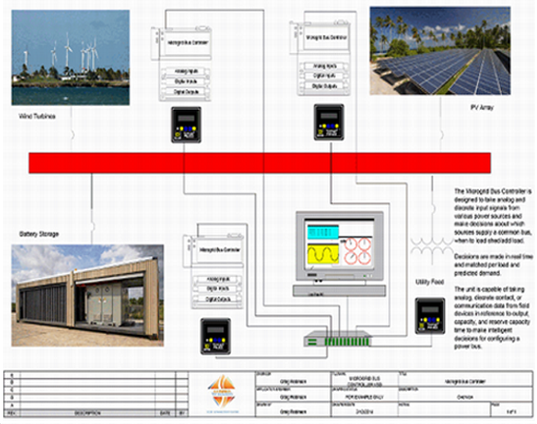

Driven by financial, environmental and regulatory objectives, Microgrid operators and developers are integrating ever-increasing levels of renewable energy . As the percentage of renewable energy grows, traditional Microgrid control strategies will be unable to maintain reliable control. Without advanced control approaches,system operators will be forced to limit the amount of renewables added to their systems or accept lower reliability.
The basis for traditional Microgrid control typically entails the dominance of a single generating entity ( or a cluster of units in close proximity, designed to load share and act as a single unit) to control system frequency and voltage . This approach serves simple Microgrid well, but does not support systems with higher penetrations of renewable and distributed energy resources.

Complex Microgrid , with high penetrations of renewables and widely dispersed generation , cannot be controlled in the same manner because there is no single generator dominating the system that has sufficient flexibility or dynamic capability to respond to the variability of renewable generation
Microgrid Control System must provide system-level monitoring, control and prediction for complex Microgrid, using a portfolio of available Distributed Energy Resources (DER) to balance and control the system . The system utilizes proven control algorithms based on decades of experience in control solutions and system- wide deployments in Europe. And North America.
The best approach is to view Microgrid as systems, with a portfolio of (DER) assets to be monitored and controlled to meet specific requirements. The system then dispatches and controls the DER assets by interfacing to the asset's l local unit controller to adjust set points
DER assets which can be utilized by the Control System are: Synchronous Generators -Engines or turbines (diesel, natural gas, biogas),Solar Photo Voltaic (PV),Wind Energy, Storage-Battery systems ultra- capacitors Hydrogen via electrolysis to fuel cell,compressed air, pumped storage, Mechanical Energy - flywheels, Demand Response, Controllable Loads- Prioritized load-shedding by device, building or feeder, Electric Vehicle Integration- Flexible demand or Vehicle to Grid (V2G),Other DER Assets- Fuel cells, Synchronous condenser and Conventional Grid Assets -Cap banks, regulators, static or dynamic VAR compensator, etc.
The features and capabilities of the Microgrid Control System include: Frequency and Voltage Control, Island Transition ( grid- connected applications), Spinning Reserve management, Load and Renewable Prediction , Optimization, Black Start,Asset Configuration ( changing and availability ), User Interface. Microgrid Control System operations are defined in modes Islanding mode, Parelleling hybrid mode